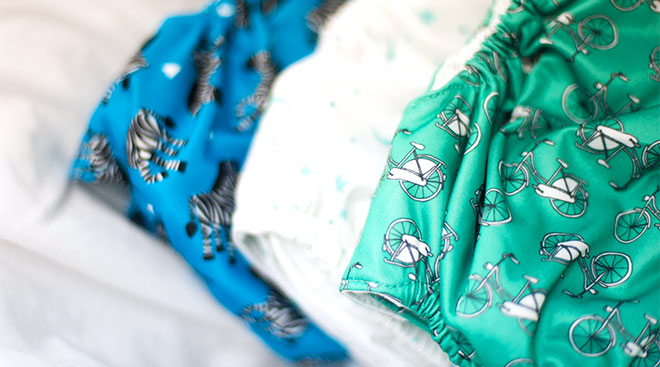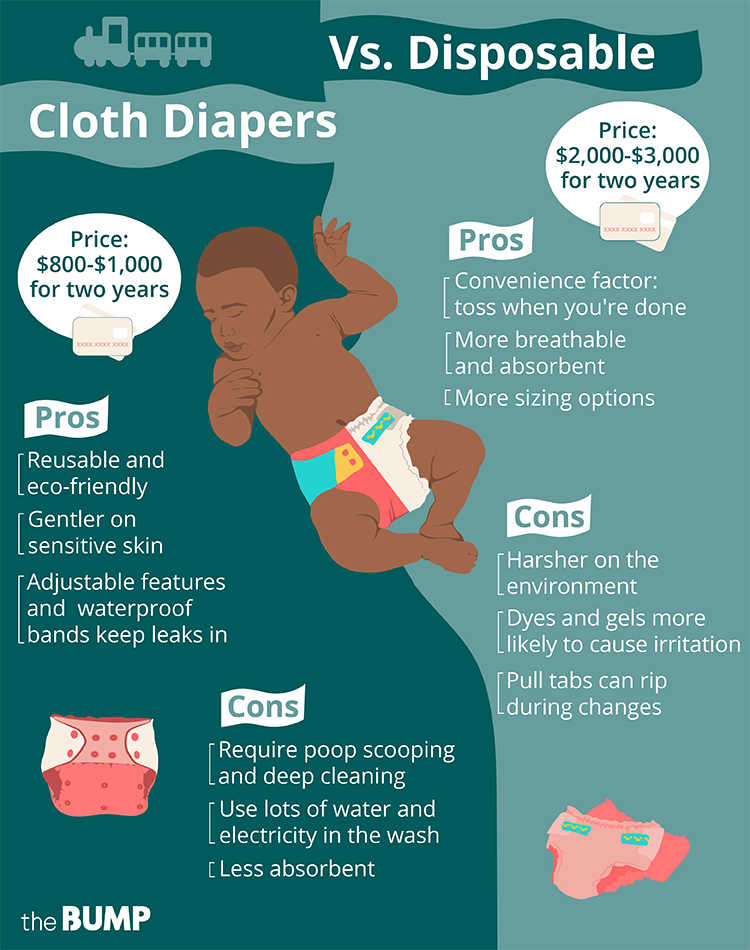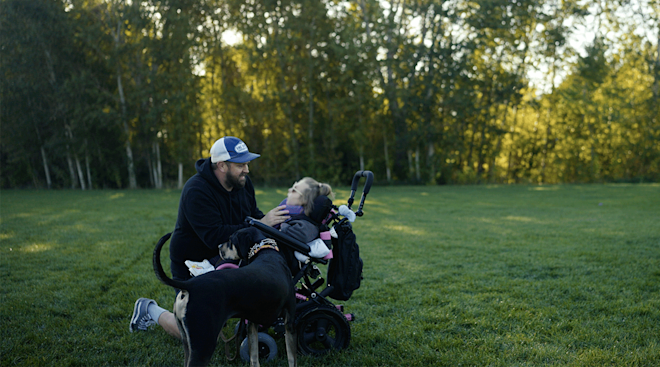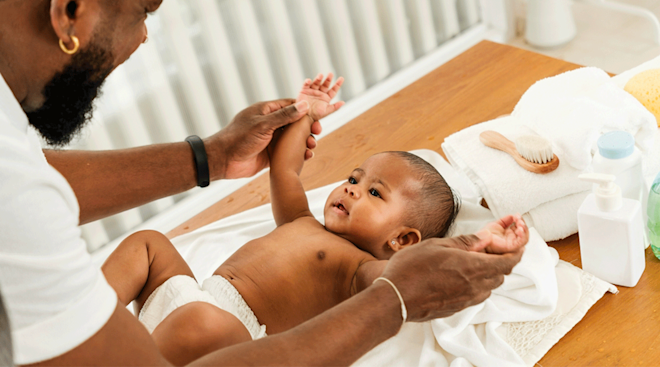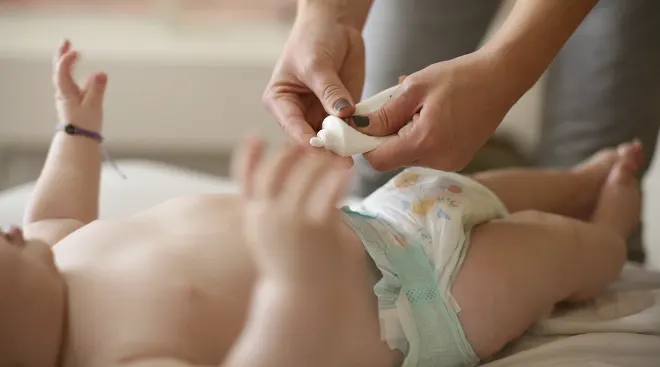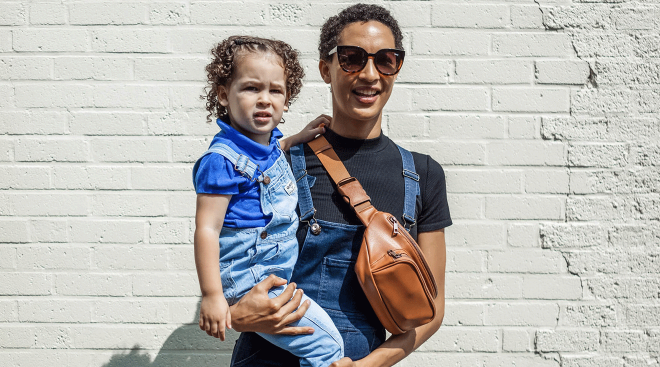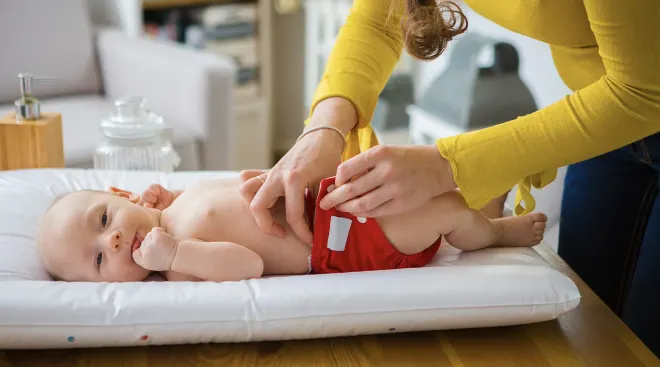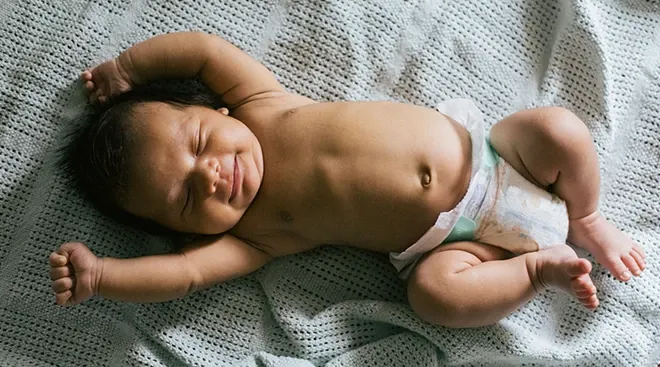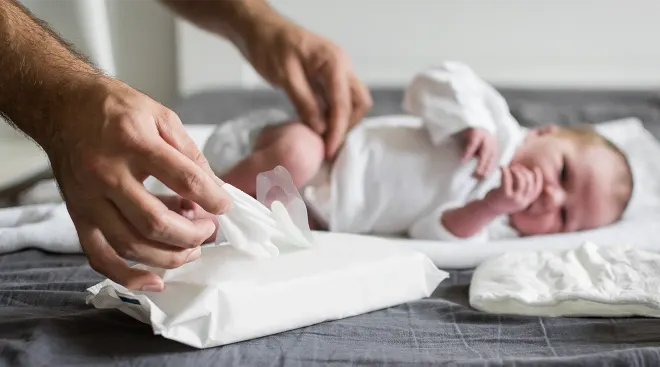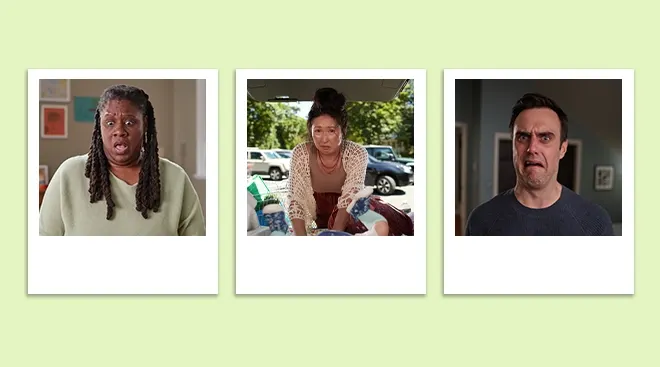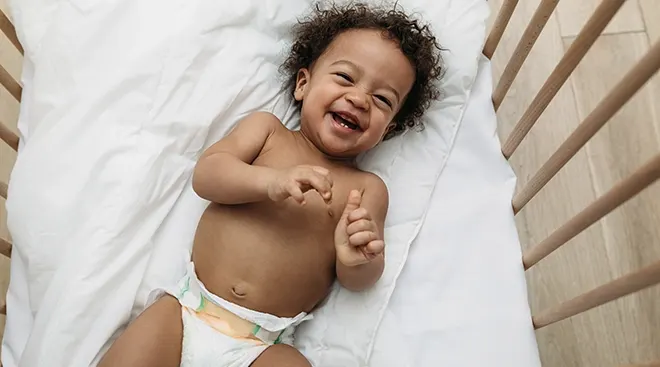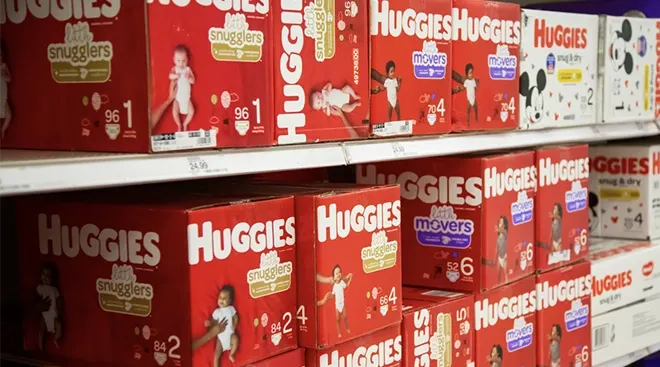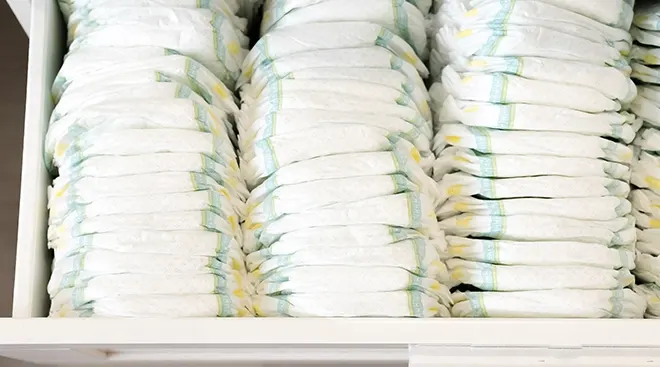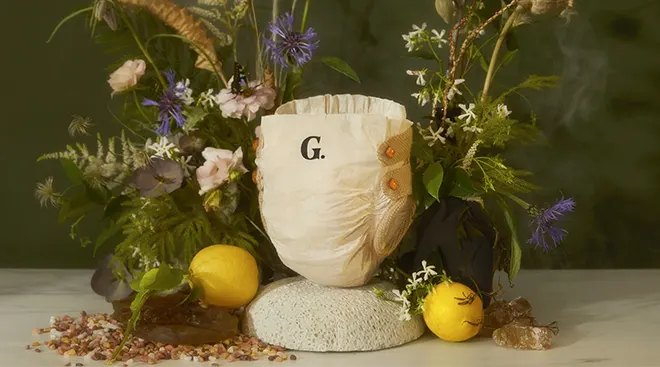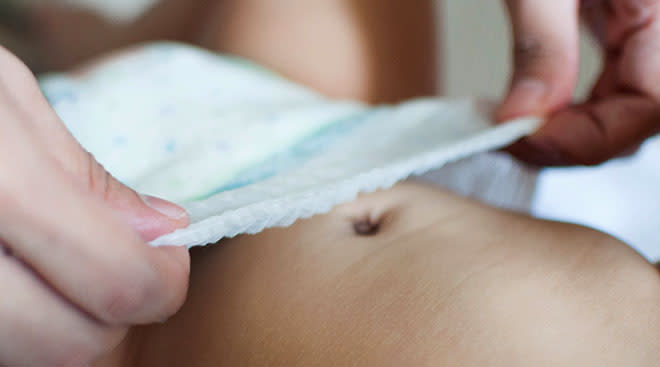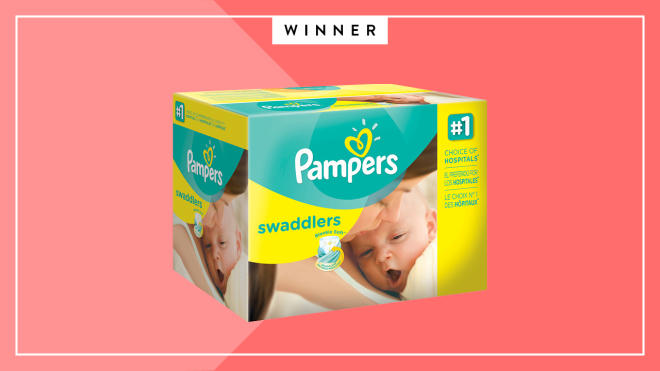Cloth Diapers 101
What do you think of when cloth diapers come to mind? Most parents imagine down-and-dirty diaper origami, complete with cotton squares and safety pins (yes, safety pins)— because that’s how it used to be. But today’s reusable baby bloomers are not your parents baby cloth diapers. These days, the reusable diaper market is saturated with dozens of options and materials to ensure baby has a comfortable, cozy (and eco-friendly) experience, enticing more and more moms to opt for cloth diapering.
Real talk: about 95 percent of moms still use the disposable variety. But in recent years, the production and popularity of reusable diapers has increased dramatically. “Cloth diapering is sometimes referred to as a ‘millennial parenting trend,’” says Maria Moser, owner of Change-Diapers.com, a cloth diaper resource blog. “Families are opting for cloth diapers because they want to save money, because they are more natural-minded, or because they simply want to avoid chemicals on their babies’ sensitive skin.”
Curious to learn more about the pros and cons of cloth diapers? Read on for the benefits of washable diapers for babies, the different types of reusable diapers available, how to use baby cloth diapers and how to wash them without making a big mess.
Cloth diapers vs. disposable diapers, which one is best? At the end of the day, it really comes down to your personal preferences.
“I don’t think one is superior to the other,” says Laurie Belosa, MD, a board-certified pediatrician at Tribeca Pediatrics in New York City. “I think that there are pros and cons to both of them, and it just depends on the family and what they’re comfortable with.”
That said, there are a few unique benefits of cloth diapers. “For one, they’re certainly all-natural—there are no chemicals in them. Sometimes they can be more comfortable for babies, just because the fabric itself can be more comfortable,” Belosa says. And that all-natural feature of washable diapers for babies isn’t just good for babies—it’s also good for the environment. Cloth diapers are made of natural fibers, making them reusable and biodegradable. Even the covers are often made from plastic bottles and can go back in the recycling bin.
Perhaps the biggest bonus of using cloth diapers? “They’re much less expensive than disposables because you’re not buying diapers all the time,” Belosa says. In terms of annual cost difference, you’re looking at $2,000 to $3,000 per child for disposable diapers, compared with $800 for cloth diapers and accessories, says Ashley Wilson, a cloth diapering expert and video blogger for MyGreenNest.com. “Plus, you can use cloth diapers for two to three years, on average, and probably longer if you take good care of them,” she says.
Another difference with washable diapers for babies is the amount of laundry in your future. Cloth diapers need to be washed every two to three days to avoid stink and staining issues. “Disposable diapers are built to keep the babies dry, but with cloth diapers, you definitely have to change them more often, because they’re less absorbent,” Belosa says. “I also find that [babies wearing cloth diapers] are more susceptible to rashes, just because they’re sitting in more moisture.”
So what are the best cloth diapers out there? Since the cloth diaper industry is growing, you have dozens of choices—which can be both great and overwhelming for a new parent who’s taking the reusable route. The key to choosing the right cloth diapers is to weigh your options. It’s also a good idea to try a few different styles and brands before stockpiling a collection. Here, we break down the perks and disadvantages of the different types of baby cloth diapers:
• All-in-one cloth diapers. If you’re looking for a completely no-fuss option, go for all-in-one cloth diapers. With this style, the absorbent soaker pad is already attached to a waterproof cover so you can take it off in one swift move, as you would with a disposable, and toss it in the wash—no diaper fasteners or assembly of any kind. “These diapers are especially great if you have a caretaker because they are so easy,” Wilson says. Just keep in mind, you’ll pay a bit extra for the convenience of all-in-one diapers, which range from $15 to $25 on average. These also tend to be a bit bulkier and can take longer to dry than inserts and prefold cloth diapers alone.
• All-in-two cloth diapers. Another option is the all-in-two cloth diapers, which are similar to all-in-one cloth diapers but include a removable soaker pad, giving you more options for heavy wetters and nighttime inserts. These also give you a bit more flexibility with laundry since you can wash and dry inserts and covers separately. Plus, all-in-two diaper covers tend to hold up through several uses because all you do is change the inserts. These diapers cost a bit more, about $20 to $25.
• Prefold cloth diapers. These diapers are basically big, cotton rectangles that are folded to mold to baby’s unique shape and kept in place with a cover. Costing $1 to $3, they’re the cheapest of all the types of baby cloth diapers and almost never leak, since the cloth is tailor-fitted and the cover acts as an extra barrier. When the diaper is dirty, simply remove the prefold and replace with a clean one. (The cover can be used over and over again until it’s dirty and needs a wash.) Another perk? The prefold cloth diapers still have life long after baby is out of them—they work well as cleaning cloths or bedding for your pet, and can even be passed on to other families.
• Fitted cloth diapers. Some prefer the fitted baby cloth diapers, also referred to as fitteds, especially when it comes to overnight and heavy wetters. Unlike prefolds, these fit baby’s curves with more precision, like disposable diapers. Running $11 to $35, fitteds have leg gussets and are highly absorbent—all very helpful in preventing leaks. You’ll still want to put a diaper cover over these. Heads up: Some reviews say fleece fabrics hold on to scent more than other options.
• Pocket cloth diapers. This style, which ranges from $7 to $20, has a diaper cover, like a prefold or all-in-two, but there’s a slot under the fabric where you tuck in the absorbent material (usually a cotton insert). When baby does their business, you take the entire cover off, pull out the insert, and wash both separately.
• Hybrid cloth diapers. Hybrid diapers, which range from $15 to $25, are similar to the all-in-two cloth diapers because you can use either a reusable or disposable insert. But unlike regular disposable diapers, these inserts don’t contain chemicals and most are compostable and biodegradable. Given the flexibility you have with hybrid diapers, they’re an excellent option for testing the waters of the cloth diapering world.
Cloth diaper accessories
In addition to the different types of baby cloth diapers, there are also various cloth diaper accessories, two of which are especially important.
• Cloth diaper covers. If you choose fitted or prefold cloth diapers for baby, you’re going to need some cloth diaper covers. They go over the non-reinforced cloth diaper to add a waterproof layer.
• Cloth diaper inserts. To make cleanup for all cloth diaper types easier, consider cloth diaper inserts or liners. You simply place one of these in the diaper before putting it on, and when it comes time to change baby, you toss the liner. The rest of the diaper is likely still intact, so you can just add a new liner.
So you’ve got the scoop on the various types of baby cloth diapers—but how do cloth diapers work? Changing them isn’t as tricky as you might think, especially if you opt for cloth diapers with Velcro closures, which make it almost identical to changing disposable diapers. You’ll just want to close the tabs before throwing them into the diaper pail and the wash so that they don’t get stuck to other diapers.
Most one-size washable diapers for babies (which can accommodate babies from eight to 35 pounds) have a snap-down rise. That means there are snaps along the top of the diaper to adjust the waistline, and then a myriad of snaps down the front to make the diaper as small or as big as you need it to be. For instance, if baby is newborn or very small, you’ll want to snap the diaper down all the way in the front to make the length as short as possible. Most likely, baby will use the middle snap-down setting for the longest period of time. Some cloth diapers also have adjustable elastic in the leg gussets to give baby an even more custom fit.
How to make cloth diapers
Many people choose to either fold their own cloth diapers using prefolds or to sew their own cloth diapers in the style of their choosing. There are many tutorials out there for making your own cloth diapers—just make sure you’re confident in your sewing skills and in the fabrics you choose. If you choose prefolds, you’ll also find plenty of tutorials for a number of folding techniques to get the right fit on baby.
How to know when to change a cloth diaper
Babies wearing cloth diapers should be changed at least every two hours, Belosa says. (FYI: The same is true of disposable diapers, though those can hold out a little longer, if necessary.) How can you tell if a cloth diaper is wet? While they don’t give off quite the same smell as disposable diapers when soiled, you’ll know when to change cloth diapers because they hang a little lower when wet. They may also feel stiff since natural fibers like cotton tend to stiffen when wet. Of course, if you don’t use a waterproof cover over the cloth diapers, you’ll definitely see that the diaper needs to be changed—and, for that matter, probably baby’s entire outfit too.
In the early days, manufacturers strongly recommended using specialty detergents when washing cloth diapers, but with today’s washable diapers for babies, many mainstream detergents will work just fine. When in doubt, “use detergent without any perfumes or dyes,” Belosa says. “That’s always advisable when you’re washing anything for babies, but especially diapers, because they’ll be so close to baby’s skin and in a sensitive area.”
Another tip for washing cloth diapers? Rely on what you know works. “Try a detergent that you’ve used to wash baby’s clothes, and if it cleans well and doesn’t cause rashes, test it out on your baby cloth diapers,” says Maria Moser, owner of Change-Diapers.com, a cloth diaper resource blog. “Depending on whether you have hard water or not, it might take a bit of trial-and-error and washing machine setting tweaks to find the perfect match for cleaning cloth diapers, but you don’t need to spend extra.”
Once you’re ready to do a load, assuming you disposed of and rinsed off solid messes right away, wash diapers separately from the rest of baby’s clothing. Wilson recommends starting with a warm rinse, then washing on the heaviest setting and finishing with a cold rinse. For hard water, try adding a capful of Calgon or a half cup of borax to boost detergent performance. Every so often (and after you check your diaper brand’s washing instructions), add a quarter cup of bleach to the bleach compartment—never directly on the diapers—to help sanitize and remove odors.
Covers and wet bags for washable diapers for babies tend to stay in better shape when line-dried, but everything else goes in the dryer. Fabric softener is a no-no for cloth diapers, since the chemicals in the solution tend to repel urine over time. Instead, opt for wool dryer balls, which are a natural cloth softening alternative—plus, they can speed up drying time by about 15 minutes, Wilson says.
How to strip cloth diapers
Stripping cloth diapers, which removes mineral build-up from leaky, smelly diapers, is also recommended once in a while. Stripping diapers is as simple as running them through several hot, detergent-free washes. To remove diaper cream residue and stubborn stains, rub some dish soap onto the diapers and rinse thoroughly before washing.
The general consensus is that you’ll want to have around 24 baby cloth diapers on hand—assuming you plan on washing cloth diapers two to three times per week. Of course, having 35 diapers will give you more flexibility, especially in the early days, since newborns can go through up to 15 baby cloth diapers a day. If you’re more budget-conscious, reusable covers and prefolds definitely help lower costs and even cut down on laundry a little, since you can swap the prefolds into the same cover a few times. Eventually, baby will need changing eight to 10 times a day, and this transition will stay about the same into toddlerhood.
You may want to test out different brands or types of cloth diapers before buying in bulk. “You don’t want to be stuck with a handful of cloth diapers that frustrate you,” Wilson says. The lesson: Don’t register for 20 baby cloth diapers from one company all at once. Some reusable diaper retailers even have trial promotions that let you try diapers from popular brands for a few weeks to help you decide what you like. DiaperJunction.com, Sweetbottoms and NickisDiapers.com have such options.
Do you really save money using cloth diapers?
Whether you save money on baby cloth diapers depends on a lot of different factors, including what kind of cloth diaper you choose, how many cloth diapers you purchase (along with inserts, covers, etc.) and the water and electricity costs that come with washing those diapers. There is an upfront cost to using cloth diapers since you’ll have to purchase all the supplies right away. That cost is usually between $200 to $500, depending on the type of cloth diapers you choose and the accessories you’ll need. That said, the savings ultimately depends on the length of time you use cloth diapers and whether or not you use them for multiple kids in a row. Some consider it an investment. While you may not save any money at all in the first year, each subsequent year is likely to save you money. And, if you use these same baby cloth diapers with younger siblings, you’ll definitely see savings in the long run.
Are cloth diapers worth it?
The answer differs for every parent. For some parents, using cloth diapers and laundering them at home is worth the extra time investment because of the potential environmental impact. If washable diapers for babies are laundered in the proper way, meaning they are only washed in full loads and line dried then reused for additional children, they can significantly reduce the diaper carbon footprint. However, if they’re washed in partial loads, tumbled dry and only used for one child, the long-term environmental benefit may not be there. Other parents feel strongly that cloth diapers will be better for baby’s skin, but that may only be true if you change them often enough. Some parents feel that they save time, effort and brainpower when they don’t have to purchase new diapers all the time and just need to do a load of laundry instead. In short, only you can decide if the time and effort involved with cloth diapers is worth the benefits you’re seeking. Try a few styles out and see how you (and baby) like them before taking the cloth diaper plunge.
Check out The Bump’s chart on cloth versus disposable diapers:
Updated February 2021
Plus, more from The Bump:
Navigate forward to interact with the calendar and select a date. Press the question mark key to get the keyboard shortcuts for changing dates.
































